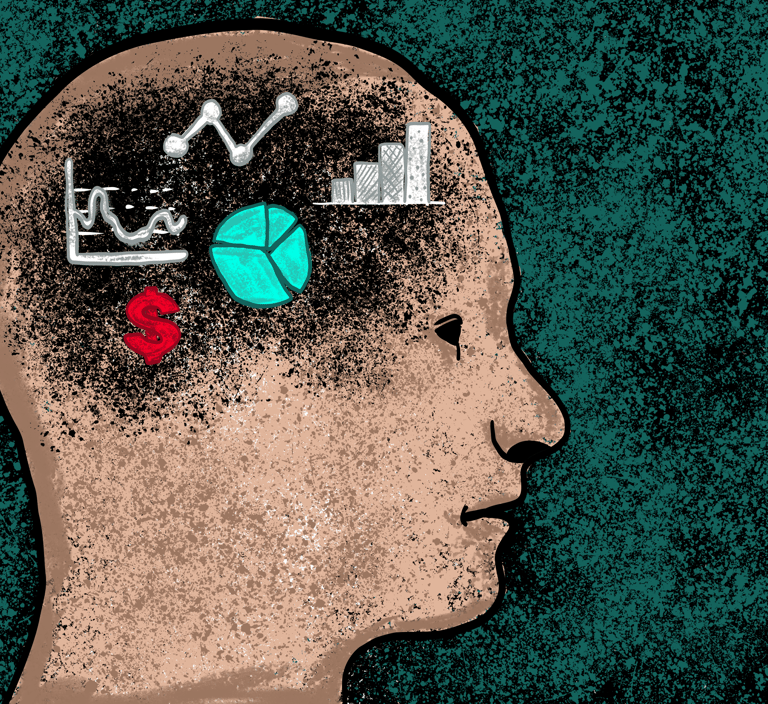Strategizing from 6 cities across the globe
Brain Economics: The Economic Value of a Flourishing Mind
Part Ii: the leisure-work dynamic
Abstract
This part delves into the complex interplay between human well-being and economic behavior, particularly the allocation of time between work and leisure. Moving beyond the foundational understanding that well-being is crucial for productivity, this part of the report specifically enriches the conventional economic model of work-leisure choice by integrating psychological factors. It posits that while the traditional framework is robust, its assumptions of stable preferences and universally rational actors fail to capture the nuanced realities influenced by mental states such as Stress, Depression, and Attention-Deficit/Hyperactivity Disorder (ADHD). The core premise of behavioral economics—that human behavior predictably deviates from purely rational models due to psychological influences—underscores the necessity of this integration, suggesting that policy interventions based solely on traditional models may be inefficient.
The conventional economic model of labor supply is built on the concept of utility, representing satisfaction from goods and services, including leisure, defined as any time not spent in paid work. Individuals face a trade-off: more work yields more income but less leisure, while more leisure means foregone income. The opportunity cost of leisure is the income sacrificed by not working, and vice versa for work. This model assumes individuals are rational agents aiming to maximize utility given time and wage constraints. Graphically, this is shown with a budget constraint and indifference curves in a leisure-income space. The budget constraint, expressed as C = w(T-L) + V (where C is consumption, w is wage, T is total time, L is leisure, and V is non-labor income), illustrates attainable combinations of income and leisure, with a slope of -w. Indifference curves map preferences, are downward sloping, convex to the origin (reflecting diminishing marginal rate of substitution, MRS), and higher curves indicate higher utility. The optimal, utility-maximizing choice occurs where the budget constraint is tangent to the highest attainable indifference curve, meaning the marginal rate of substitution of leisure for income (MRSL,C) equals the wage rate (w).
Wage changes induce two effects: the substitution effect and the income effect. A wage increase makes leisure relatively more expensive, leading individuals to substitute work for leisure, thus increasing hours worked. Conversely, a higher wage increases real income, and if leisure is a normal good (meaning demand increases with income), individuals will "purchase" more leisure, reducing work hours. The net impact depends on the relative magnitudes of these opposing effects. A crucial assumption for the income effect's direction is that leisure is a "normal good," but this can be influenced by psychological state; for instance, severe depression might diminish utility from additional leisure, weakening the income effect. The traditional model's static snapshot also overlooks evolving preferences influenced by cumulative stress or mental health changes, highlighting the need for dynamic analysis.
"Brain Economics" posits mental wellness as a central determinant of economic behavior. To capture this, the traditional utility function U(W,L) is expanded to U(W,L,C,E,M,P), incorporating Cognitive Capacity (C), Emotional Regulation (E), Motivation & Drive (M), and Physical Vitality (P). This acknowledges that satisfaction from consumption and leisure varies with an individual's state across these wellness domains, suggesting that interventions targeting mental wellness can have significant economic impacts.
The report then examines three specific wellness states:
Stress: Defined as a psychophysiological response that depletes cognitive resources and impairs decision-making. Leisure serves as a critical coping mechanism, promoting psychological detachment and replenishing resources. Stress primarily impacts Emotional Regulation (E) and Cognitive Capacity (C), subsequently affecting Physical Vitality (P) and Motivation (M). The marginal utility derived from leisure under stress is conceptualized as following a U-shaped pattern. Initially, small increments of leisure may offer minimal relief (downward slope/shallow), but beyond a "turning point," additional leisure yields sharply increasing marginal utility as it becomes highly effective for recovery. This implies that individuals under high stress might rationally choose more leisure than traditional models predict, especially if it's high-quality leisure. High stress effectively steepens indifference curves for leisure, increasing the optimal quantity of leisure (L*). This concept aligns with the Yerkes-Dodson Law, which states that performance peaks at an optimal level of arousal and deteriorates when arousal is too high or too low.
Depression: Characterized by persistent loss of interest (anhedonia), fatigue, and cognitive difficulties. It has substantial economic consequences, including lost productivity, absenteeism, and presenteeism. Depression profoundly impacts Motivation & Drive (M), Emotional Regulation (E), Cognitive Capacity (C), and Physical Vitality (P). As depression severity increases, the marginal utility from work progressively decreases due to anhedonia, cognitive impairments, and feelings of worthlessness. The report introduces the formulation dW/dΨ < 0, where Ψ represents depression severity, indicating that as depression worsens, the perceived marginal utility from work (or wage, W) declines. This "psychological tax" on work utility leads to reduced desire to work, lower hours, and disengagement, potentially making financial incentives ineffective. The situation is compounded because depression often reduces utility from leisure too, potentially breaking down the traditional work-leisure framework.
ADHD: In adults, ADHD is characterized by distractibility, prioritization difficulties, and time management challenges, impacting workplace performance and emotional regulation. It primarily affects Cognitive Capacity (C), indirectly influencing Motivation & Drive (M) and Emotional Regulation (E). The utility from work for an individual with ADHD exhibits an oscillating pattern. During "hyperfocus peaks," they show intense concentration and derive exceptionally high marginal utility. Conversely, during "distraction troughs," utility can plummet due to boredom or overwhelm. Despite a constant nominal wage, individuals with ADHD may experience a "frustration threshold" where the perceived effort or discomfort outweighs the external reward, leading to disengagement. This necessitates job design that leverages hyperfocus potential and mitigates challenges, emphasizing non-monetary aspects of work like task interest, autonomy, and clear feedback over solely financial incentives.
To formalize the interplay, Ψ (Psi) is introduced as a composite index of mental flourishing. The inequality dW/dΨ < 0 proposes that an increase in wage (dW>0) can, under specific conditions, lead to a decrease in mental flourishing (dΨ<0). This relationship manifests when higher wages are correlated with job characteristics detrimental to Ψ, such as long hours, poor work-life balance, or toxic environments. Reconciling with traditional utility theory, if total utility (Utotal) is a function of consumption (C), leisure (L), and mental flourishing (Ψ), then Utotal = f(C,L,Ψ). A higher wage might increase material well-being but diminish psychological well-being, resulting in an ambiguous or even negative net effect on total utility. This implies individuals may rationally choose lower-paying jobs that offer better prospects for mental flourishing. For policymakers, it underscores the importance of creating "good jobs" that support mental well-being, advocating for a holistic view of "compensation" that includes mental flourishing alongside monetary earnings. "Brain Economics" proposes that prioritizing mental well-being will unlock economic growth and suggests evaluating economic progress beyond traditional metrics like GDP.
The report concludes by synthesizing these impacts: stress reshapes leisure utility, depression attenuates work utility, and ADHD introduces oscillating work utility, all challenging the "one-size-fits-all" traditional economic model. A more comprehensive neuro-economic model must incorporate state-dependent utility (U=U(W,L∣C,E,M,P)), acknowledge heterogeneity, account for dynamic feedbacks between choices and wellness, and include cognitive effort/costs.
It highlights as well a "productivity paradox" where the relentless pursuit of output without regard for employee wellness can lead to long-term productivity losses due to burnout, errors, and turnover. It advocates for redefining "human capital" to include mental flourishing (Ψ) as a foundational component, without which acquired skills cannot be optimally deployed. Ultimately, this integrated neuro-economic approach champions a shift from reactive to proactive wellness strategies, emphasizing that maintaining and enhancing mental flourishing is economically efficient in the long run. A summary table further illustrates how each wellness factor primarily impacts Cognitive Capacity, Emotional Regulation, Motivation & Drive, and Physical Vitality.


Download the full document
Design by Huda Khalili
Lead Researchers: Michael Martino, Elie Joe Akiki
Senior Researchers: Naji Mansour, Karim Harake, Tia Haidar, Jennifer Al Asmar
Junior Researchers: Caila Worley, Leticia Nassar, Michelle El Choueiry, Raya Hage
